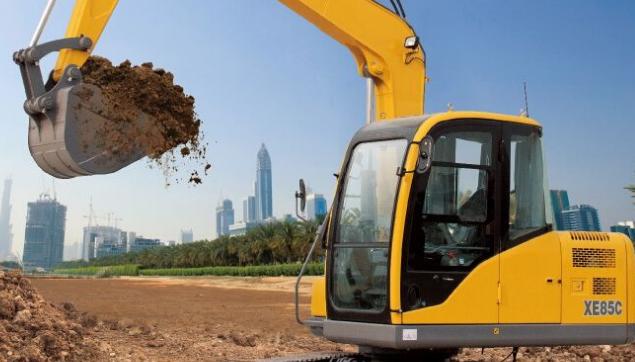The excavator uses a bucket to excavate materials above or below the bearing surface. Then load them into a transport vehicle or unload it to a stockyard. The materials excavated by excavators are mainly soil, coal and sediment. And the soil and rocks after pre-loose. Among construction machinery in recent years, excavators have developed rapidly. It has become one of the most important engineering machineries in engineering construction.
With the continuous development of excavators, it has different functions. The original definition of excavator is closely related to excavation. There are several types of buckets for excavators. In addition to hydraulic shovel, there are electric shovels, pull shovels and bucket shovel. In order to meet different needs, countries have built a series of giant machines.

When demand is insufficient, these giant devices encounter limitations. Many super large electric shovels are the end of scrapped and dismantled. Just like many heavy equipment operators in American history. They have all disappeared in the long river of history. There are technical limitations. Such as the production of engines, large castings and forgings. As well as the performance of materials, the sealing and tightness of hydraulic parts. Extreme producing has been challenging the overall level of manufacturing.
Back to the topic and talk about excavators. In terms of size, hydraulic shovel is inferior to electric shovel and pull shovel. Compared with giant electric shovel and pull shovel. Although it is small, its technical content is not inferior. The super-large hydraulic excavator has better site adaptability in mining. It has higher working efficiency. It has gradually replaced the work of electric shovel and pull shovel.

Let's talk about the hydraulic shovel first. If ranked according to the weight of the whole machine, Terex-O&K RH400 ranks first. It weighs 980 tons. The Liebherr R9800 ranks second with a weight of 804 tons. Hitachi EX8000 ranks third with a weight of 780 tons. Demag H740 OS weighs 744 tons and ranks fourth. Komatsu PC8000 weighs 714 tons and ranks fifth. Judging from the bucket capacity, RH400 still dominates with its samurai cubic meter bucket capacity.
Besides other kinds. Take a look at the history of world machinery development. Western countries have created a series of giants. The "Marion 6360" electric mining shovel built by the American Marion Company in 1967. The whole machine weighs 13,600 tons. It is equivalent to two hundred heavy tanks. The total power reaches 21,300 horsepower. The bucket has a capacity of 138 cubic meters. This is by far the largest electric mining shovel in the world. The 4250W pull shovel built by Bucyrus in 1969. The whole machine weighs 12,558 tons. Its total power is 32,000 horsepower. The bucket capacity reached an astonishing 168.2 cubic meters, making it the largest pull shovel in the world.